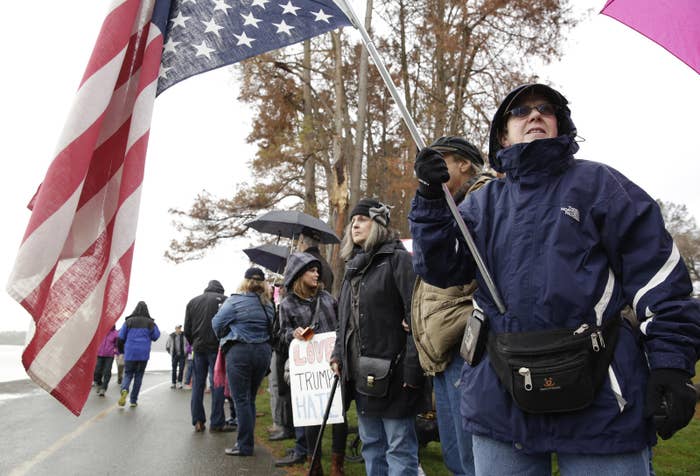
Anti-Trump protest organizers nationwide have struggled to unify after the election — and as their rage cools and the inauguration draws closer, the disparate factions don’t appear to be coalescing into anything larger and more lasting.
The individual groups have scrabbled to find common ground and define basic goals, but fragmentation has taken hold. Protest organizers who spoke to BuzzFeed News said that while they wanted to work with other activist groups, few had concrete plans to do so.
The #NotMyPresident Alliance, one of the first post-election protest groups to emerge, formed a coalition of affiliates in different cities after the initial wave of protests had subsided. The original strategy was to convince enough members of the Electoral College to become “faithless” to their party — that is, switch their votes from Donald Trump to Hillary Clinton. Leaders of the group even aggregated and posted some Electors’ personal addresses and phone numbers online to encourage supporters.
The plan immediately encountered complications. Many Electors responded that were not reading emails sent to them and that they were redoubling their commitments to Trump.
#NotMyPresident subsequently announced a name change to Unite for America and created a new, separate Facebook group. It partnered with the Action Network Group — a loose affiliation of small groups in various American cities brought to life by House of Cards creator Beau Wilimon meant to “move the world progressively forward” — and the Hamilton Electors, a group of Electoral College members who want someone other than the president-elect because “the founding fathers intended the Electoral College to stop an unfit man from becoming President.”
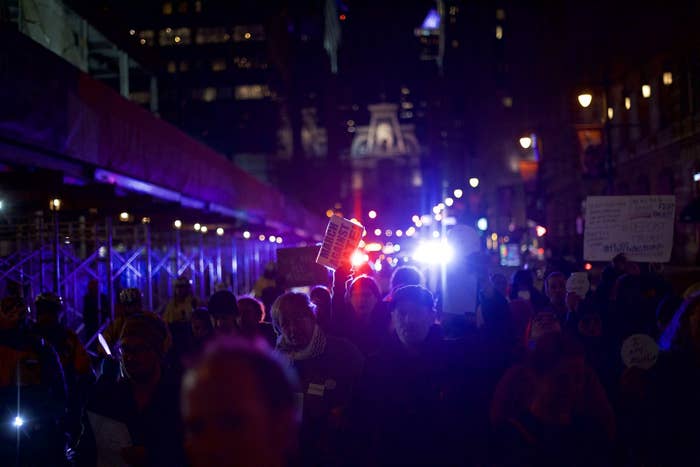
A contingent of the group then appeared to prematurely call for supporters to contact members of the House of Representatives. This would be the seeming next step of the faithless electors strategy — if enough Electors changed their votes, the decision on the election would go to the House, which is controlled by the Republican party.
The new group’s focus was on a petition urging Electors to vote for a moderate Republican “compromise” candidate.
Jon Gedney, a co-founder of #NotMyPresident and Unite for America, said the compromise candidate could be John Kasich, as proposed by Texas Elector Christopher Suprun in a New York Times op-ed, or another candidate who is “actually fit to serve,” as opposed to Donald Trump. Kasich has admonished the Electoral College not to vote for him, but Gedney believes he may say yes if drafted.
Gedney previously told BuzzFeed News, “There’s only so far that protests can go. There has to be a point where people organizing take that raw emotion and start doing the busy work and take action to come up with a solution.”
These fast shifts in strategy have left some supporters disillusioned. The #NotMyPresident Facebook groups, meant to galvanize the thousands of people who took to the streets after the election, have faced attrition as they have attempted to move members to the Unite for America groups. Some members said they do not agree with the group’s new direction and departed.

Gedney said he sees disarray among the protest groups but believes the movement is slowly coalescing, adding that now that Jill Stein’s recount efforts have failed, “we’ve had a ton of new signups looking for a second Hail Mary.” He added, “We are all united in stopping this terrible thing from happening.”
Several boycott movements, a separate strategy from targeting the electors, have struggled to agree about which businesses qualify — whether it’s retailers that carry Trump merchandise, organizations with financial ties to the president-elect, digital ads on Breitbart’s website (which have little effect, according to Bretibart), or companies whose executives (former or current) support Trump.
These economic protests are also not working in concert with other types of anti-Trump resistance, according to their founders, though Unite for America has encouraged its supporters to follow the guidelines of #GrabYourWallet, one of the boycott movements.
Some groups are having trouble uniting amongst themselves.
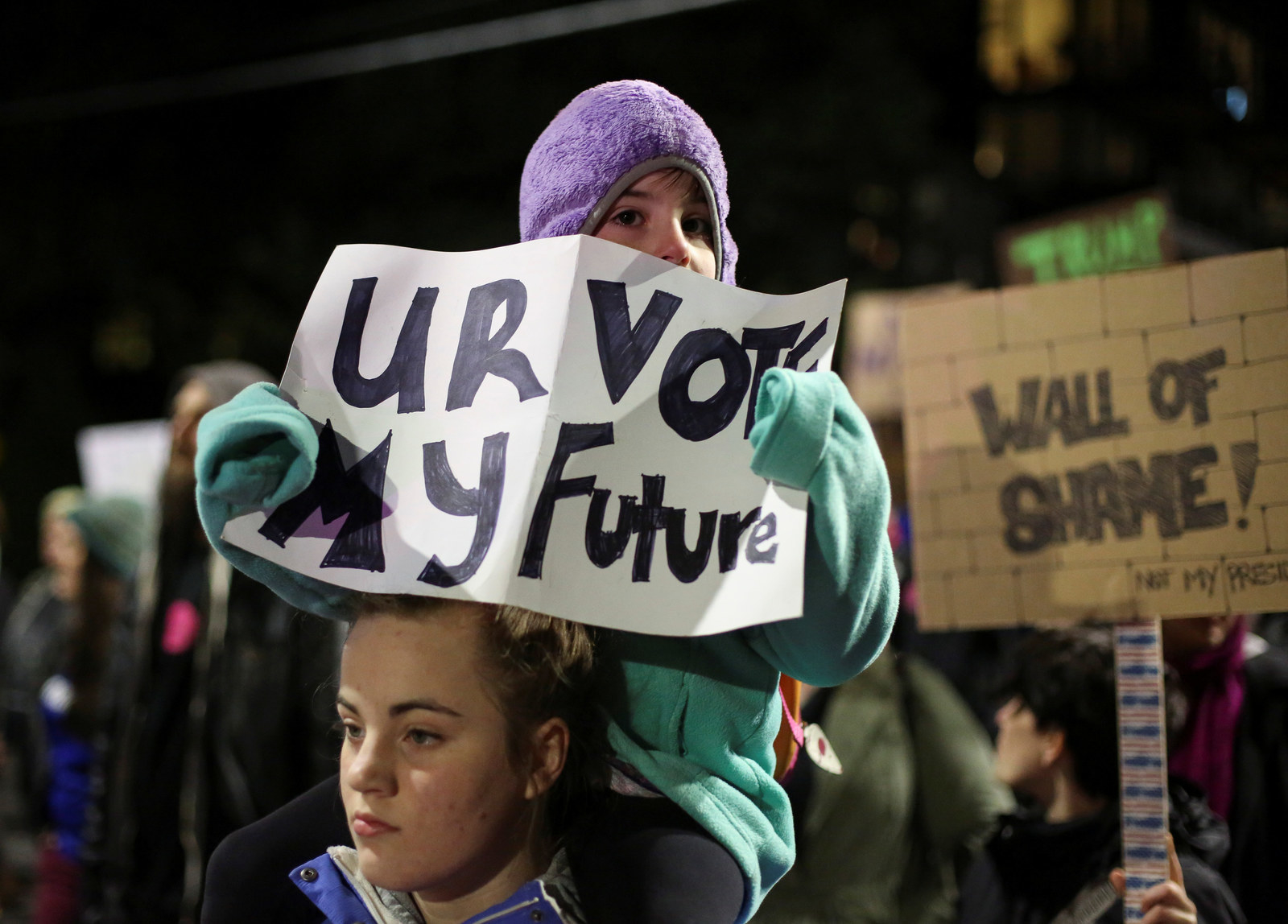
Gedney said he had been in touch with organizers from the Women’s March on Washington, a large march planned for the day after the inauguration in Washington, DC, but the Women’s March has maintained an apolitical stance and has not endorsed Unite for America’s strategy targeting the Electoral College. The march’s organizing group has not found a unified focus.
Breanne Butler, an organizer for the march, said the march’s leaders aren’t focused on specific policies or initiatives besides gathering people in Washington. She said the march’s organizers are not working with other activist groups to expand their efforts or continue them after the march.
Fontaine Pearson, an organizer formerly involved with the Women’s March, said that she diverged from other leaders on what will happen after the march itself. She pushed other national organizers to help groups from each state to hold protests on their home turf. “Where can this grassroots movement go?,” she said. “Is it going to change things, or are we going to show up, march, and go home? How will these groups connect? I’m not sure that [the other organizers] are there yet.”
Unite for America has faced similar struggles. Portland, Oregon was the site of the anti-Trump protest’s most violent incidents so far and home to Portland’s Resistance, an original member of the #NotMyPresident Alliance. Activists there, however, have chosen to remain apart from national efforts by focusing on local politics, and lead organizer Greg McKelvey believes his group has been kicked out of #NotMyPresident/Unite for America.
Next week, organizers said protester in more than 25 cities will gather to demonstrate against the feared normalization of sexism, racism, homophobia, and xenophobia under a Trump presidency in what they call a "Hail Mary" effort to pressure the electoral college to cast their vote against him.
The protests will occur under the national umbrella of "Women & Allies" a group started by longtime activist Ann Massaro, who said "not everyone can go to the march in January." Massaro's group is not officially affiliated with the women's march after the inauguration.
Isabella Gutierrez, 21, who organized the New York City portion of the protests — 5,000 people indicated on Facebook they will attend — said it is "our last hoorah to be heard and show [the electoral college] that the popular vote and the people did not vote for this."
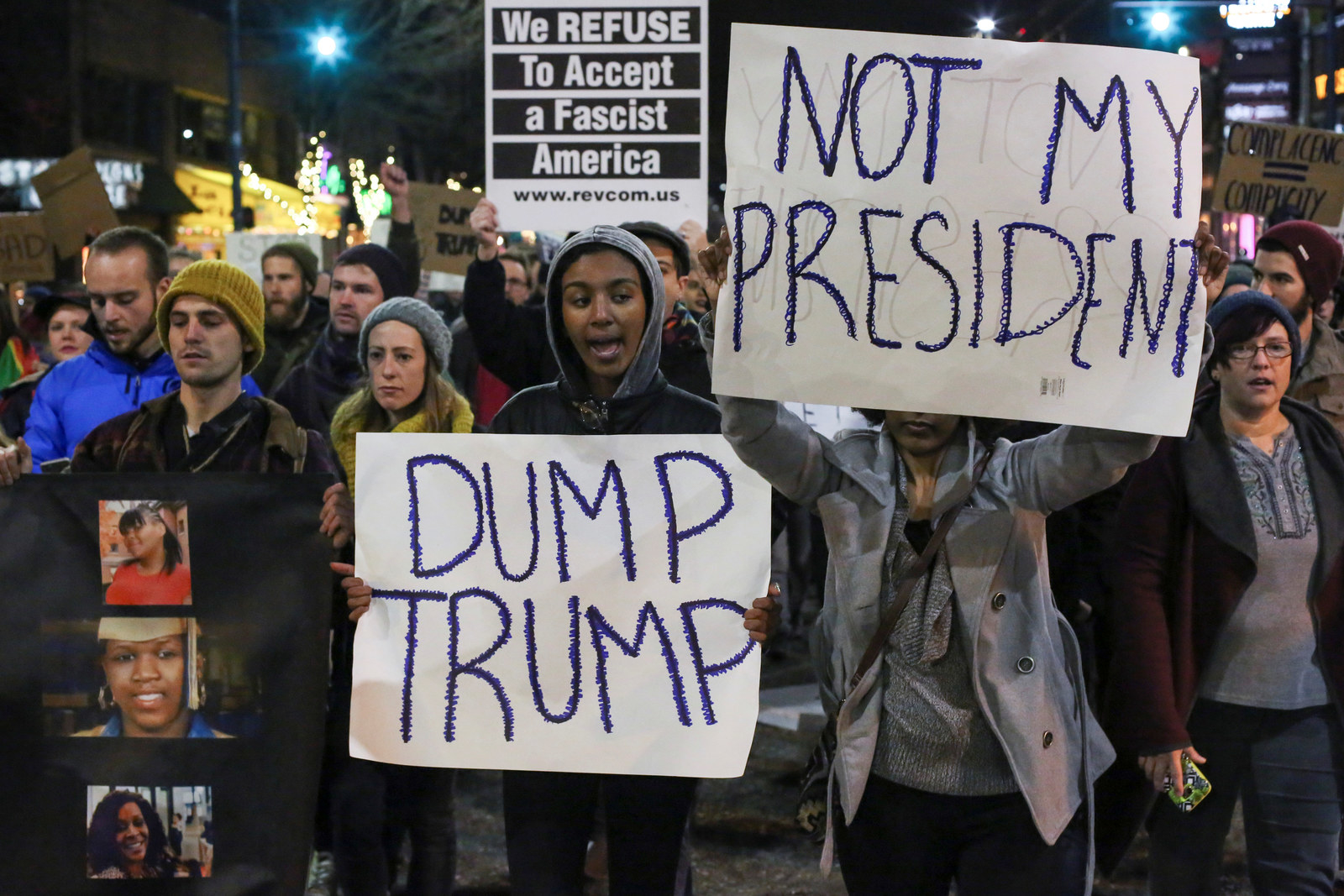
More established organizations, including Clinton’s campaign and the official Black Lives Matter network, have not involved themselves with Unite for America or other anti-Trump groups. Bernie Sanders supporters have formed their own coalition, the New York Progressive Action Network, which did not immediately respond to request for comment.
Two left-leaning unions, National Nurses United (NNU) and Communications Workers of America, invited the policy-focused activist group AllOfUs2016 to co-sponsor a rally with Bernie Sanders, but that invitation did not form the basis of a lasting partnership, according to NNU and the founder of AllOfUs.
Fragmentation was part of how the anti-Trump protests began, with a mix of individuals and activist organizations starting protests as small Facebook events that snowballed into thousands of people marching in the streets across the country.
Individuals in Baltimore, Alabama, and New York City who organized one-off marches during the week of the election told BuzzFeed News they haven’t continued to stage protests, nor do they plan to, and that they have not directed protest attendees to work with activist organizations. Many of the people, particularly women, are facing coordinated online harassment after organizing protests.
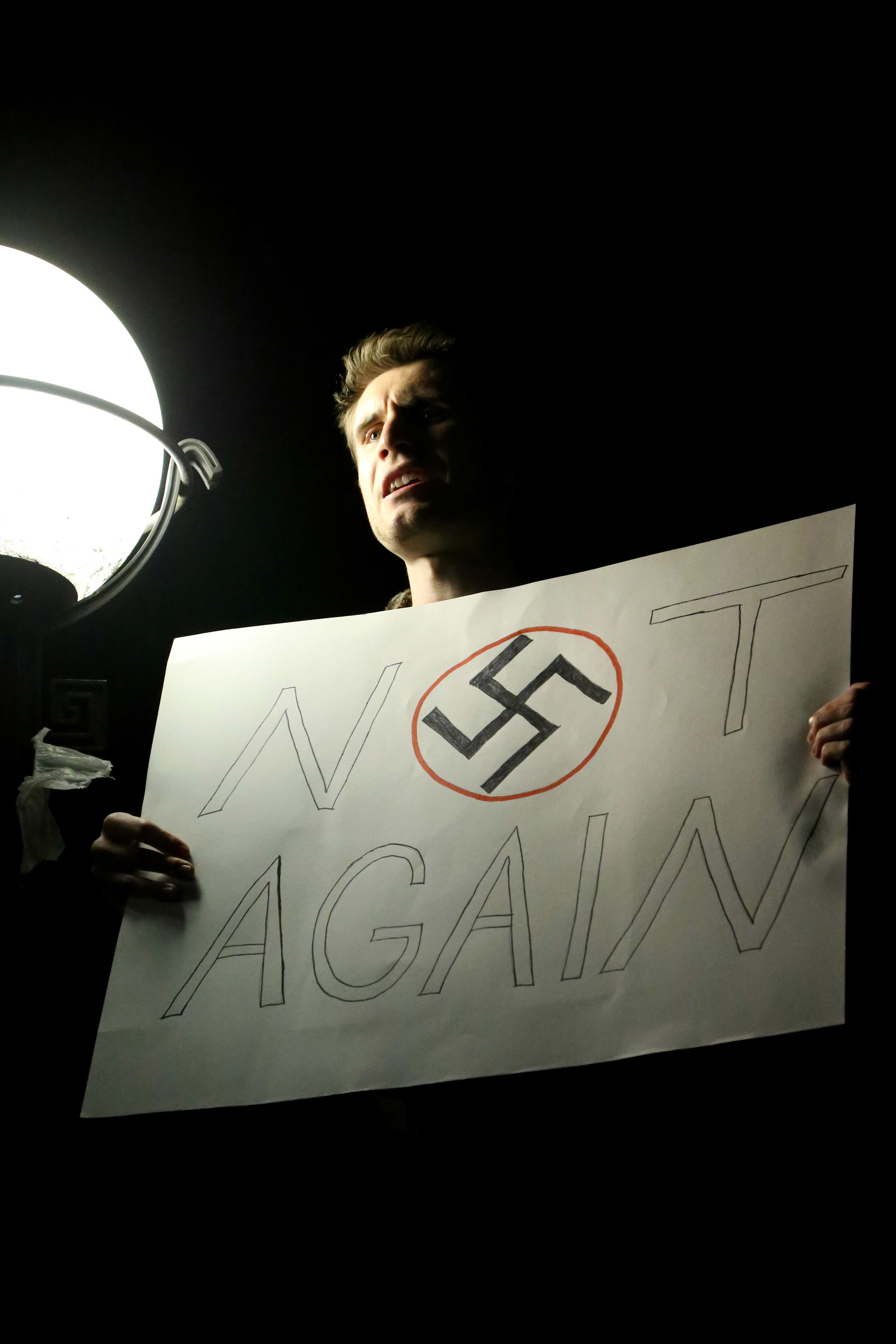
Will Cowan-Essig, who organized a protest of nearly 600 people in New York City via a Facebook event, told BuzzFeed News, “I'm not organizing any more protests because people have dropped their enthusiasm. I tried, but very few people were still active.” She hopes to attend more protests.
To Todd Gitlin, a professor of journalism and sociology at Columbia and an organizer of one of the first national demonstrations against the Vietnam War, the possibility of sustained protests seems slim, particularly because so many of them began on social media.
“This is not something you can do at the keyboard. It’s patient, steady work that requires thoughtfulness and disciplined discussion, not just a long train of comments,” he said. “It requires people who know what an organization would look like. Creating coalitions and establishing priorities and demands is hard work.”
Several groups that spoke to BuzzFeed News are looking forward to the inauguration and have organized protests there, but whether that jolt of energy congeals into a movement remains to be seen. Their first barrier will be uniting around a common ideology and list of demands.
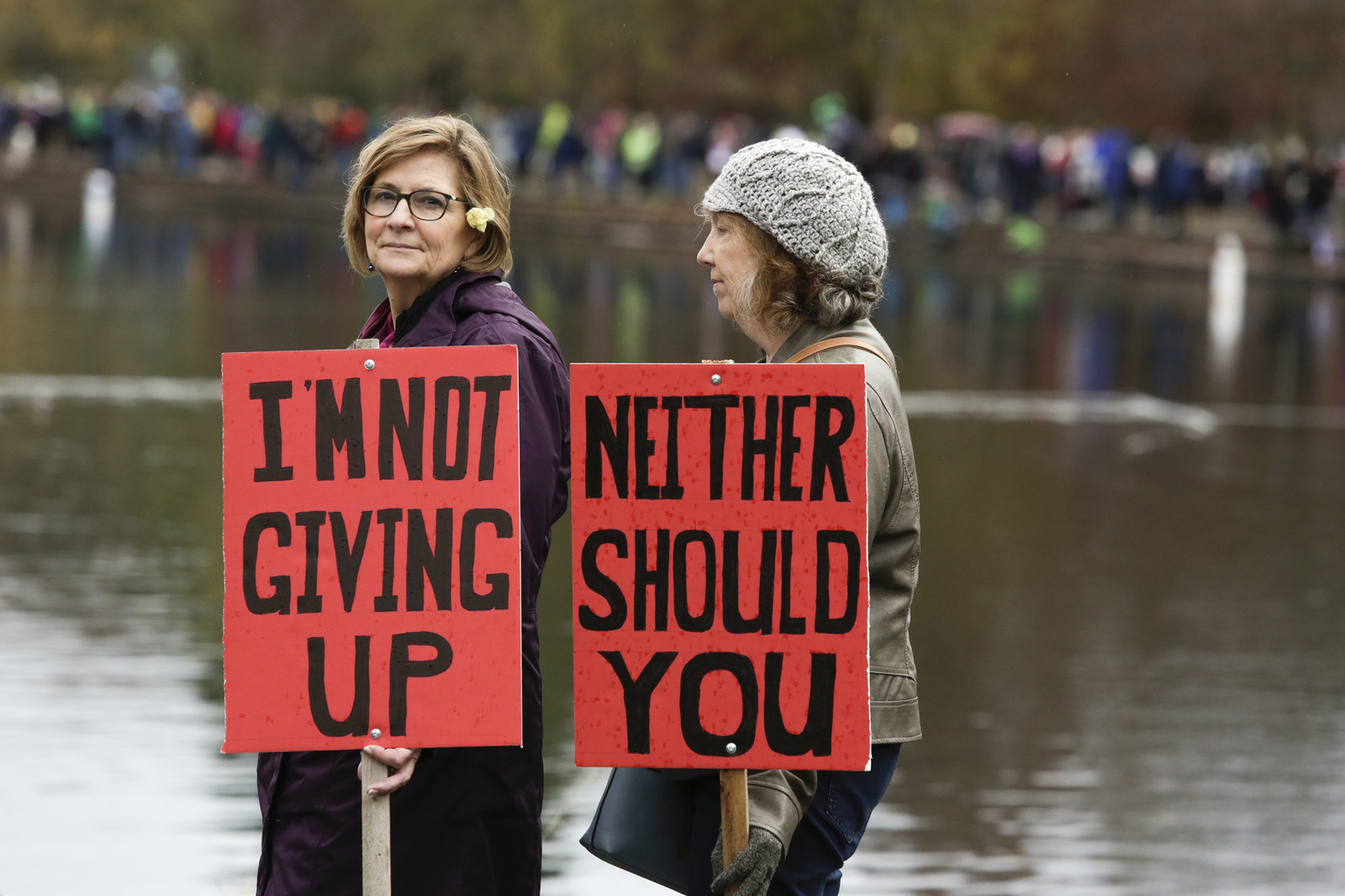
Gitlin told BuzzFeed News, “For a real movement to form, it has to be cogent enough so that someone in rural America can recognize that she’s part of the same movement as someone in Charleston, South Carolina. People may disagree, but this movement has to be able to identify what it is members have in common, and I don’t see signs of that yet.”
The current lack of coherence within the anti-Trump protests may mean it will not become a proper movement. The inauguration will serve as both a lightning rod and a last chance for the demonstrators to create a long-term resistance against Donald Trump.
Protests alone, however, may be insufficient.
Micah White, one of the founding members of Occupy Wall Street, called for a “movement that transforms into a party” in The Guardian a week after the election, advocating for protesters to seek elected positions because protests will be ineffectual without sympathetic members of the legislature.
Despite his support for the protesters, White wrote that their current methods won’t be enough: “It is magical thinking, and a dangerously misguided strategy, for activists to continue to act as if the masses in the streets can attain a sovereignty over their governments through a collective manifestation of the people’s general will.”
The next few weeks, professor Gitlin said, “are crucial.” He added, “You can say the protests originated in overpowering dismay and disorientation, but that only lasts so long before people exorcise it in the streets and go back home. Then what movement do you have?”
Mary Ann Georgantopoulos contributed to this report.
